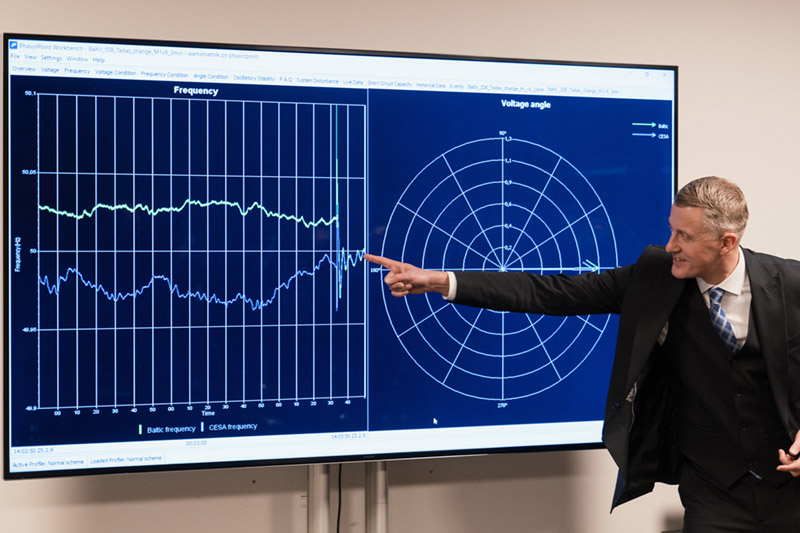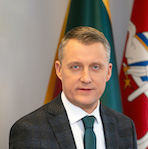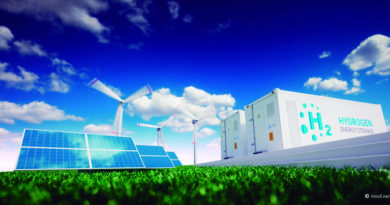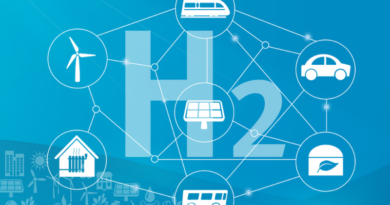
Energy Security in the Baltics: from synchronization to critical energy infrastructure protection model of the EU
The Baltic States’ electricity system synchronization with the Continental European Networks on February 9th 2025, marks a historical milestone in energy security and independence of the entire region – a goal accomplished by dedicated efforts of almost two decades. By permanently disconnecting from the IPS/UPS system, the Baltic States have not only reinforced their sovereignty but have also set a precedent for energy resilience within the European Union. This achievement underscores also Lithuania’s commitment to strengthening the EU Energy Union, enhancing energy security, and paving the way for a more robust European energy infrastructure.
For 65 years, Lithuania remained dependent on Russian energy systems, leaving it vulnerable to external pressures. Lithuania recognized the strategic necessity of energy independence early on, investing in alternative energy infrastructure and supply diversification.
The commissioning of the Klaipėda LNG terminal in 2014 was a decisive step, allowing Lithuania to eliminate reliance on Russian gas imports. In light of Russia’s aggression against Ukraine and the energy crisis in Europe, Lithuania, followed by Estonia and Latvia, was the first EU country to completely stop importing Russian pipeline gas and LNG, both de jure and de facto, setting a benchmark for others to follow. As geopolitical uncertainties continue to shape the European security landscape, it is crucial to unite efforts to protect and secure critical energy infrastructure, which is vital for completing the EU Energy Union, boosting EU competitiveness, and ensuring a stable and reliable supply of affordable energy. The Baltic region faces unique challenges due to its geographic location and the increasing threats to undersea cables, energy transmission networks, and supply routes. Recognizing these risks, the EU has been intensifying its efforts to ensure infrastructure protection, with European Commission President Ursula von der Leyen outlining four key priorities on February 9, during the Baltic Energy Independence Day in Vilnius: prevention, detection, response and repair, and deterrence. Consequently, the Baltic States are uniquely positioned to spearhead these initiatives and transform themselves into a flagship model of excellence in infrastructure protection and resilience. Lithuania’s and all the Baltic States proactive approach is evident in its extensive national investments in energy security tools, including anti-drone systems, monitoring systems for undersea cables, and emergency reserves of critical transmission network equipment. However, as security threats transcend national borders, a unified European strategy is essential. Lithuania together with Estonia, and Latvia and Poland by a Joint Statement on the Protection of Critical Energy Infrastructure Asset signed, on the 9th of February de facto advocates for the establishment of a dedicated regional flagship model of excellence in critical energy infrastructure protection and resilience, focusing on the Baltic States as a testbed for broader EU implementation. This initiative aligns with the EU’s “Action Plan on Cable Security” and upcoming strategic documents such as the Internal Security Strategy, the Preparedness Union Strategy, and the White Paper on the Future of European Defence. A coordinated EU-wide effort is necessary to safeguard critical energy assets and ensure the long-term stability of the European energy market.

To achieve this, the following actions must be taken – establishing an EU-wide civil-military security and resilience approach, creating and enforcing a dedicated EU investment framework, and promoting synergies with NATO. One crucial area requiring immediate attention is the protection of submarine cables, which are vital for both communication and electricity transmission across Europe. Ensuring their security will play a critical role in the stability of the Baltic States energy markets and broader European electricity system.
The success of the Baltic States electricity systems synchronization with the Continental European Networks demonstrates that ambitious goals can be realized through political will, investment, and regional cooperation.
Lithuania alongside with Estonia, and Latvia and Poland stands ready to continue leading by example, advocating for enhanced infrastructure security, and working with
European partners to fortify the EU’s energy resilience. With modest yet strategic EU investments within the region, substantial progress can be achieved within just 12 months. By embracing a forward-thinking approach and leveraging their unique position, the Baltic States cannot only secure their own energy future but also contribute to a more secure and resilient European energy landscape. The time to act is now, ensuring that Europe remains prepared for the challenges of tomorrow while capitalizing on the successes of today.




